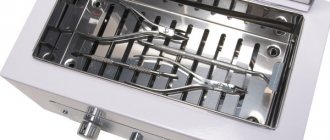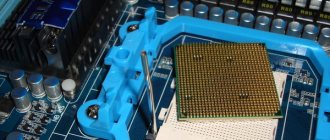Many brands are engaged in the production of televisions in 2021, but there are not so many truly successful companies in this business. Considering this fact, we decided to prepare an article for our readers. In it we talk about which brand of TV is best to buy, and also reveal the main nuances of the brands. After reading the material, you will know whose products to consider purchasing, and whose crafts it is better to avoid.
Philips
pros
- budget cost of devices
- thin frames, stylish design
- natural colors, clear image
- Ambilight
- convenient remote control
Minuses
- Slow Smart function on Saphi
According to experts, the Dutch brand Philips is the most prominent representative of manufacturers who are equally responsible for the production of both expensive premium TVs and inexpensive basic devices that are popular with the mass consumer. The hallmark of this company’s technology is its spectacular Ambilight lighting, which makes color rendering more natural.
HARPER
pros
- vibrant color rendering
- built-in video player
- protection against unauthorized activation
- affordable price
- Various inputs/outputs are provided
Minuses
- low digital tuner sensitivity
- poor quality sound without high frequencies
Those who want to choose an inexpensive brand of TV should pay attention to the products of the young Taiwanese company HARPER. Founded in 2014, the company is developing, surpassing many famous manufacturers in the sale of inexpensive devices. HARPER TVs are distinguished by excellent brightness and clarity of the picture, vivid color reproduction, and the presence of such additional features as recording TV shows on a flash card and then watching them at a convenient time.
The best mid-range TV brands
Middle-class TVs are the golden mean between economy and technology. Many manufacturers that produce primarily medium-priced electronics manage to compete seriously with the most famous and well-known companies known throughout the world. This is not surprising, because their best developments often keep up with the inventions of leading brands in a number of parameters and functions, but at the same time cost several times less. Some of them even boast a very good level of implementation of quite complex technologies, as well as high quality and resolution of images, and sometimes a good set of useful add-ons.
Samsung QE55Q90RAU
In the Samsung QE55Q90RAU model, the manufacturer managed to solve the main problem of VA matrices - small viewing angles. This was done using Ultra Viewing Angle technology, which consists of applying a protective layer to the panel that prevents uneven distribution of light (analogous to “X-Wide Angle” from Sony). Another advantage of the Samsung QE55Q90RAU is its powerful audio system, consisting of 4 speakers and 2 subwoofers with a total power of 60 W. Using built-in microphones, the TV analyzes the acoustics in the room and adjusts the distribution of sounds between channels on the fly for optimal sound. Smart TV operates on Tizen 4.0 OS. There is a Multi View split screen option, interior mode and SmartThings control of smart devices. The Koreans paid special attention to the game mode, integrating into it a dynamic black equalizer (Dynamic Black Equalizer) and a contrast and color enhancement function (Real Game Enhancer).
Advantages:
- high-quality picture from any viewing angle;
- universal remote control One remote;
- 10-year factory warranty against pixel burn-in;
- high-quality sound without a soundbar;
- compact leg;
- thoughtful game mode with imputlag within 14.5 ms.
Flaws:
- 119,000 rub. – 25% more expensive than Sony KD-55XG9505;
- The lack of Dolby Vision prevents the full potential of Netflix content from being fully realized.
Samsung QE55Q90RAU is a universal TV that can efficiently solve any user problem. Quantum Dot technology and 240 local dimming zones (4 times more than the Sony KD-55XG9505) make the image of the 55-inch VA panel extremely detailed and deep, and the peak brightness of 2000 nits allows for full display of HDR video. Thanks to the built-in 4.2-channel audio system, you can save on the purchase of external speakers.
Reviews on Yandex.Market
No. 15 – BBK 32LEX-7289/TS2C
Price: 11,439 rubles
Budget device from a renowned manufacturer. Traditionally for models at this price, there is HD+ resolution (1366 by 768 pixels). You shouldn't expect much detail from the picture, but graininess is not as noticeable as is usually the case with inexpensive TVs. The screen diagonal is 32 inches.
Users in reviews call one of the advantages of the debutant in the rating a convenient complete remote control. It is not overloaded with unnecessary buttons and is intuitive. The TV has support for Smart TV on the Yandex platform. The interface cannot be called lightning-fast; there are freezes, but other devices at this price slow down more. The model also wins comparisons with competitors in the segment due to its rich set of connectors: three USB ports, a pair of HDMI. For complete happiness, dual-band Wi-Fi is not enough. Here the module recognizes only the 2.4 GHz band.
BBK 32LEX-7289/TS2C
LG
pros
- branded IPS matrices
- bright colors
- Smart TV on webOS, update possible
- Active* HDR technology
Minuses
- old style connectors excluded
Another Korean brand, known for its huge range of products and occupying a leading position in the list of global manufacturers of electronic equipment. LG owns many developments from inexpensive simple models to expensive devices with 4K UHD resolution and unique innovative features. Thus, premium TVs provide voice control, surround sound, a light sensor, and support for various formats, standards and interfaces. LG developed the WebOS platform.
Sony KD-55XG9505
The manufacturer has equipped the Sony KD-55XG9505 with a VA matrix with high-quality anti-reflective coating, which allows you to position the TV regardless of the position of the window.
The main feature of the model is the “X-Wide Angle” technology, which partially eliminates the problem with viewing angles. Android Oreo 8.0 OS allows you to easily install applications familiar to most users, including players and games; it is also possible to transfer content from your phone (Chromecast) and record TV shows. For voice control there are separate microphones in the TV frame and in the remote control. The remote control itself is made in a traditional style - with a large number of buttons, including two separate buttons for Google Play and Netflix. Advantages:
- wide viewing angles;
- convenient location of ports (down or to the side);
- HDMI ports support eARC – you can play Dolby Atmos and Dolby TrueHD;
- two additional tweeters;
- input lag in game mode does not exceed 22 ms;
- reliable legs with a system of built-in wires;
- 16 GB of internal memory;
- High quality Malay assembly.
Flaws:
- no HDMI 2.1, which could become a significant drawback after the release of PS5;
- When watching streaming services, you may experience incurable freezes.
Sony KD-55XG9505 is in every sense a bright representative of the premium class with honest HDR (peak brightness - 1200 cd/sq.m), a real 10-bit RGB matrix without additional white pixels and with sixty local dimming zones that increase the expressiveness of the display of dark scenes . This TV is fully worth its cost (95,000 rubles), it can be used both for games and Internet content, and for watching high-quality video files, regardless of ambient lighting.
Reviews on Yandex.Market
Display type
Initially, TVs used LCD matrices, later they were improved to the LED level. They are still installed in products in the budget and mid-segment. More expensive and advanced are OLED, QLED and NanoCell, used in expensive models. Therefore, when buying a TV and deciding which screen is better to choose, it is worth taking into account the opinion of a specialist in this matter and your own preferences.
LED
If LCD screens were backlit with fluorescent lamps, then in LED-backlit matrices LEDs are used for these purposes. Due to this, the thickness of TVs has decreased significantly. They are still widely used in designs and are divided into the following types of TVs with their own matrices:
- IPS . The location of liquid crystals in such panels is in a plane parallel to the screen. In this case, light scatters in different directions. The matrices have a good viewing angle and high color rendering quality. As a disadvantage, we can note the weak contrast and not deep black color.
- V.A. _ In such matrices, the crystals are located perpendicular to the screen plane. Due to this, the light flux is completely blocked, making the black color deep and rich.
QLED
These matrices do not use any separate, more advanced technology. Between the layer of liquid crystals and the LED backlight, another layer was added, on which quantum dots were applied. They absorb the blue light from LEDs and then emit it again, but the wave already has a strictly set length. Thus, the output colors – red, green and blue – are purer than those of simple LED matrices.
The new design used by modern TVs eliminates the need for light filters used in LED devices. There they increase color accuracy, but after passing through the filters, the brightness decreases due to refraction of the light flux and a decrease in its intensity.
In QLED displays, the light structure is minimally distorted, so the generated image becomes as close to reality as possible. The results are bright and rich images with accurate color reproduction, even shades and a wide color gamut.
Nano Cell
The presented technology was developed by TV manufacturer LG. In fact, this is the same QLED using 1 nm nanoparticles. They are applied to a special film and absorb waves of intermediate wavelengths. As a result, the output is only pure colors.
For example, red does not contain yellow or orange impurities, and blue comes out without mixing with green and yellow colors. The result is a realistic image with no distortion even at maximum viewing angles.
OLED
The OLED matrix is used by the best smart TVs; it is a perfect design with organic LEDs, without any additional backlighting. The output is high-quality, bright and contrasting images. However, such devices are subject to gradual fading, and traces of static images become visible on them.











